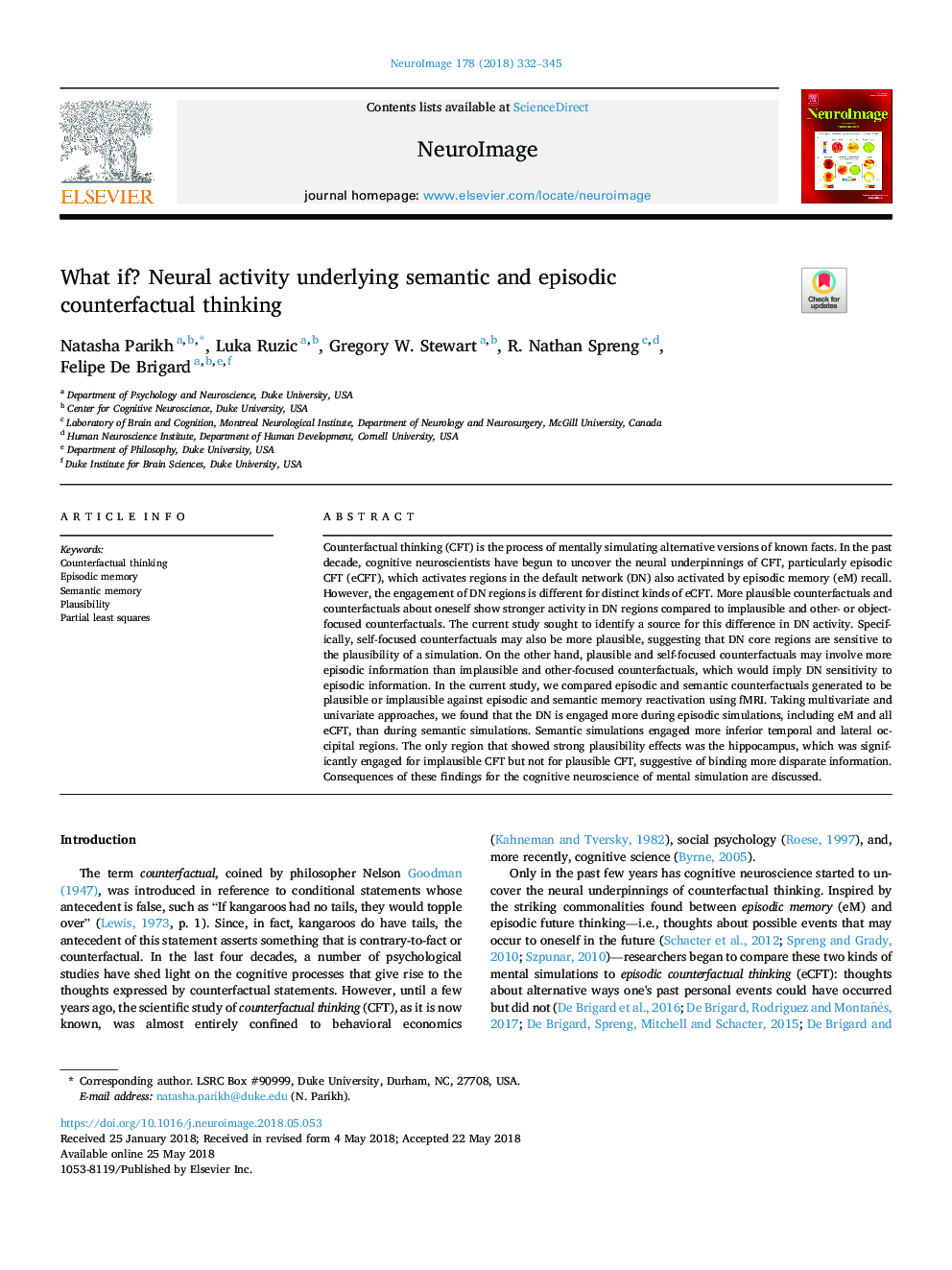| کد مقاله | کد نشریه | سال انتشار | مقاله انگلیسی | نسخه تمام متن |
|---|---|---|---|---|
| 8686757 | 1580832 | 2018 | 14 صفحه PDF | دانلود رایگان |
عنوان انگلیسی مقاله ISI
What if? Neural activity underlying semantic and episodic counterfactual thinking
ترجمه فارسی عنوان
چه می شود اگر؟ فعالیت های عصبی اساس تفکر انتقادی معناشناختی و اپیزودیک است
دانلود مقاله + سفارش ترجمه
دانلود مقاله ISI انگلیسی
رایگان برای ایرانیان
کلمات کلیدی
تفکر فاقد فاکتور، حافظه اپیزودیک، حافظه معنایی، قابل اعتماد بودن، حداقل مربعات جزئی،
موضوعات مرتبط
علوم زیستی و بیوفناوری
علم عصب شناسی
علوم اعصاب شناختی
چکیده انگلیسی
Counterfactual thinking (CFT) is the process of mentally simulating alternative versions of known facts. In the past decade, cognitive neuroscientists have begun to uncover the neural underpinnings of CFT, particularly episodic CFT (eCFT), which activates regions in the default network (DN) also activated by episodic memory (eM) recall. However, the engagement of DN regions is different for distinct kinds of eCFT. More plausible counterfactuals and counterfactuals about oneself show stronger activity in DN regions compared to implausible and other- or object-focused counterfactuals. The current study sought to identify a source for this difference in DN activity. Specifically, self-focused counterfactuals may also be more plausible, suggesting that DN core regions are sensitive to the plausibility of a simulation. On the other hand, plausible and self-focused counterfactuals may involve more episodic information than implausible and other-focused counterfactuals, which would imply DN sensitivity to episodic information. In the current study, we compared episodic and semantic counterfactuals generated to be plausible or implausible against episodic and semantic memory reactivation using fMRI. Taking multivariate and univariate approaches, we found that the DN is engaged more during episodic simulations, including eM and all eCFT, than during semantic simulations. Semantic simulations engaged more inferior temporal and lateral occipital regions. The only region that showed strong plausibility effects was the hippocampus, which was significantly engaged for implausible CFT but not for plausible CFT, suggestive of binding more disparate information. Consequences of these findings for the cognitive neuroscience of mental simulation are discussed.
ناشر
Database: Elsevier - ScienceDirect (ساینس دایرکت)
Journal: NeuroImage - Volume 178, September 2018, Pages 332-345
Journal: NeuroImage - Volume 178, September 2018, Pages 332-345
نویسندگان
Natasha Parikh, Luka Ruzic, Gregory W. Stewart, R. Nathan Spreng, Felipe De Brigard,
